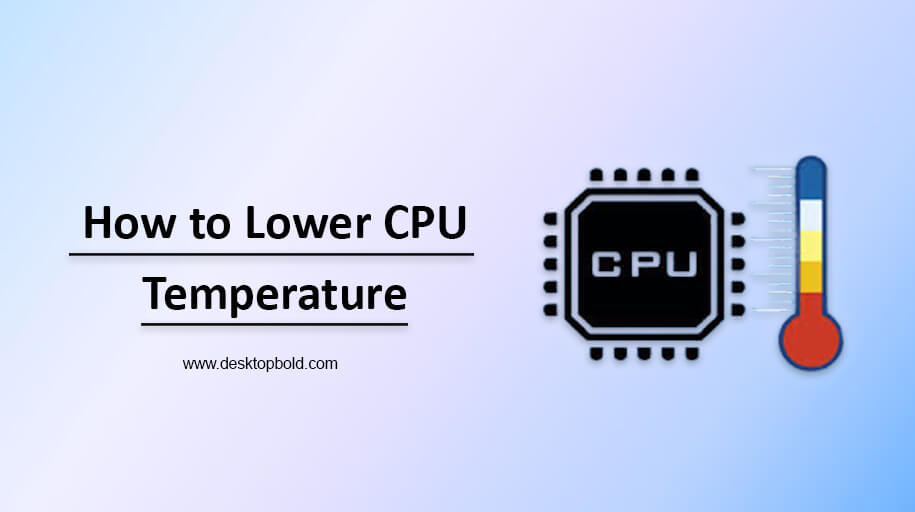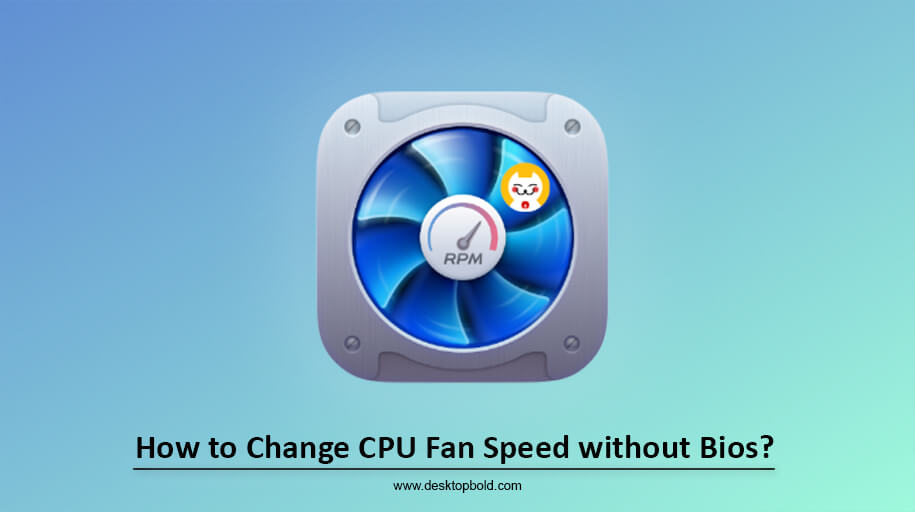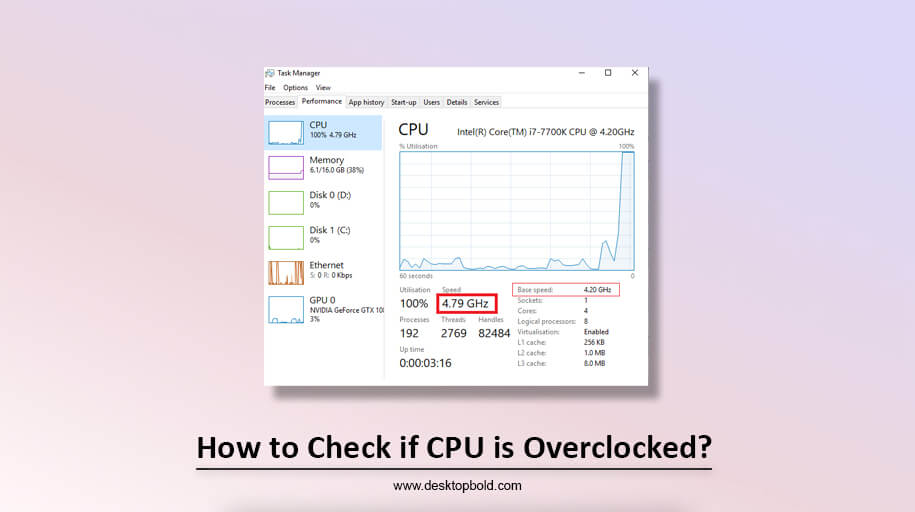Intense temperatures are something you should keep away from while working with electronic parts. Extreme heat is terrible for gadgets in general. To add insult to injury, they might be rendered pointless by overheating. It applies to your computer’s central processing unit in specific. If you own a desktop or portable computer, you should monitor the temperature of the central processing unit periodically. The temperature of a CPU will rise as its activity increases. But, with the correct conditioning setup, you can guarantee that your CPU won’t overheat, even under intense pressure.
Throughout this blog, we will discuss techniques to resolve the issue, i.e., how to lower CPU temperature. If you’d like to know how to reduce the temperature of your central processing unit, go on.
1. Lower Your CPU Usage
If your CPU is excessively hot, you may have too many processes functioning simultaneously. Do you have 25 Browser windows open in the back while playing CPU-intensive games on one screen and online streaming material on the opposite? At the same time, 10 additional programs begin to run as you switch on your computer.
What you’re undertaking is excessive.
If your CPU temperatures are incredibly high, the very first step you ought to take is to rule out the chance that you are the underlying cause. See how much your computer is utilized by opening the Command Prompt in Microsoft.
2. Location of your Computer
Setting up a system is fundamental. Locating a CPU in a place with good air is essential for keeping stable internal temperatures. Furthermore, if consumers reside in hotter areas, establishing a space with air conditioners is suggested. When you can move to a colder region of the home, such as a cellar, it can be worthwhile to set up an office there.
3. Clean Out Your Computer
If your CPU temperatures are too high, you should first consider opening your computer and cleansing it out, especially if you own an outdated laptop or your pc is placed in a filthy region.
As dust accumulates within the case, ventilation is reduced, and the CPU isn’t chilled as effectively as it should be. Frequently dusting your computers is an essential factor in computer maintenance. Especially if you possess a laptop, where space is already at a premium and ventilation is constrained, avoiding dust from collecting is crucial for preventing your CPU from overheating.
The blades in the software system and the areas around every duct or hole in the casing should receive the most attention when cleaning away dirt (or out).
4. Cable Management
Due to the excessive interior space taken up by the seemingly unending bundles of connections, the improper power cord can significantly decrease ventilation. Cleaning and organizing them may enhance airflow and minimize temperatures. Moreover, objectively, neatly organized wires are a significant upgrade.
5. Reapply Thermal Paste
If you’ve recently finished cleaning the computer, applying new thermal paste is the following procedure. One may be experiencing higher temperatures because the thermal paste between the CPU and the radiator has decayed, especially if the pc is old or you haven’t renewed the paste recently.
Within this instance, users must clean the connection point just on the CPU fan and the rear of the CPU by disconnecting the cooler. To get rid of any remaining thermal paste, I first use a razor to scratch off as much as feasible and then wipe away the rest with a lint-free wipe. You can use 90% isopropyl alcohol on the cloth to provide a deeper clean; however, a dry lint-free towel will do just fine.
Start applying a tiny portion of the thermal paste after cleaning them. Check out THE best thermal paste guide for some fresh paste.
6. Upgrade the CPU Cooler
If the CPU is still operating excessively hot after you’ve counter PC, reapplied thermal paste to the CPU and CPU fan, and wanted to make sure your chassis has good wires, you should consider changing your CPU cooler.
Then, one may have more significant issues if one already possesses good CPU cooling. However, if you’re utilizing the OEM fan and the temperature is excessive, switching to a good air cooler or an AIO liquid cooler can help lower the processor’s temperature changes to the average range.
Consider these two resources for suggestions on suitable CPU coolers:
- Greatest Low-Profile Air CPU Coolers
- Greatest Reduced Air CPU Coolers
7. Add More Case Fans to the System
It’s possible that the casing isn’t enabling adequate airflow into the system if you’ve got a quality CPU cooler installed or changed to one but are still experiencing Computationally high temperatures. If that’s the case, consider placing more fans in your latest case to improve ventilation.
Users probably need to rearrange the fans in this case. The CPU is likely overheating since each fan is set up to draw air into the computer, and none of the fans are set to exhaust heat out of the casing. However, if the entire fan base is set to blow air from the case, the negative pressure inside could make the CPU run warmer than usual.
One could also try adjusting the blades to see if this helps lower the CPU temps if they aren’t set appropriately.
8. Speed up the Existing Fans
Modern computer systems typically have multi-carrier controllers for adjusting the speed of the onboard fans. If one of the company’s computers overheats or is operating at a higher temperature than usual, increasing fan speed will improve cooling. The computer’s fan speed can change in the BIOS settings.
A fan is mounted close to the power source in the computer. The case fans are the sole fans many computers have, which are responsible for a lot of the cooling. Using a program like Speed Fan to make the fans function at faster rates is one way to significantly enhance circulation in the computer significantly, thus helping to keep the processor colder. The higher its rotational speed, the more air is pushed into your case, reducing the computer and CPU temperature.
9. Turn Off the System
Turning off the computer is an easy way to let it cool down. Finish the shutdown procedure and wait for the screen to go white. If users think their computer has overheated, disconnect all its power sources.
The best way to find out what triggered the computer to warm up rapidly is to let it cool down immediately. When you’ve gone too far, most people recommend turning off your computer for at least one hour, although you should still touch the case to ensure all the heat has disappeared.
10. Be Careful with Overclocking
While overclocked, keeping an eye on your CPU’s temperature is critical. While overclocking can improve your gaming performance, it will increase your computer’s internal temperature.
Using temperature tracking software like Ballistix MOD is necessary for successful overclocking. You can choose from several devices that will alarm you or show your temperature when you reach a specified value, allowing you to respond accordingly.
How to Lower CPU temperature while Gaming?
Once switched on, the computer’s many parts generate a lot of heat. It is where your computer’s cooling system comes in handy. A heat sink and blades are cooling components that push hot air out of your computer. Even with a cooling solution, the computer’s central processing unit (CPU) might get too hot during heavy work like gaming or video editing. Now, I’ll demonstrate some tried-and-true methods for keeping your central processing unit cool.
CPU temperature symptoms become more prominent when performing intensive tasks like video processing or playing demanding games. Even with proper ventilation, overheating can occur when doing routine tasks if the thermal paste on the CPU is either incorrectly installed or has worn out.
Get a Better Power Supply
A substantial fan is incorporated into the power source. Without a specialized case fan, the computer’s power supply will have to do extra duty to vent internal heat. Overheating of the central processing unit (CPU) can occur if the fan isn’t operating correctly. Furthermore, efficient cable management in the power supply prevents cables from hindering air movement within the system.
Invest in Water Cooling
Investing in water cooling is the most efficient method for lowering CPU temperature. Since their early stages, moisture systems have come a long way in terms of structure and functionality.
It is easy to rapidly reduce CPU temperatures with a small AIO that comprises a coolant and fan. It’s worthwhile if you have the time and expertise to construct a water-cooling block precisely for the computer’s needs. If performed well, it pays the cost.
Conclusion
Keeping the computer cool is relatively easy, but it does rely on how you use it. You can keep your system at a far more controllable temperature by taking a few easy steps. It’s best to prepare your plan ahead if you want to overheat or play computer games with intense visuals.
Preventing excessive heat is simpler than lowering CPU temperature. Users may do this by standing aside instantly, switching off the computer, and avoiding a repeat performance. If you want to save money on something other than extra cooling systems, you’ll have to adjust your routine if you wish for a cooler-running CPU; this how to lower CPU temperature is explained in detail.




